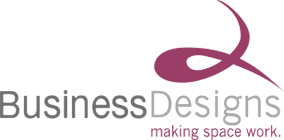Office furniture will usually form a significant part of your overall budget for setting up an office. It makes sense to try to maximise value for money in your furniture purchase and to only buy what you need.
Typical factors that you should consider include:
1. Budget:
Is this at a premium or are you looking to make a lasting impression to your staff and visitors? As a rule of thumb melamine desks are a more durable and cheaper solution than ones that are veneered. Veneers tend to give a more expensive Executive look.
2. How you work:
Are large L shaped desks required or can you opt for more space efficient wave desks? Your overall decision should be based on the space you have available, the size of your PC monitor and cost. You should also consider whether height adjustable desking is required.
3. Storage:
This can be accommodated in a number of ways including shelving, pigeonholes, suspension and lateral filing. If you need lots of suspension files then 2, 3 and 4 drawers offer a good, cost effective solution. If you need a mixture of shelving and filing, consider 2-door and tambour units with internal fittings to suit your individual requirements. They are a little more expensive but are more flexible and space efficient. If space is at an absolute premium, consider floor to ceiling storage wall.
4. Power & Data:
Is this in the vicinity or are you going to have to spend more money bringing this to each desk? Perhaps consider adding a cable management package to your desk to accommodate cables more safely and attractively.
5. Seating:
We often suggest that if budgetary choices have to be made, the client spends a little more on their work chair. Quite simply you get what you pay for. The minimum requirement you should be looking for is seat gas lift, back rest rake and height adjustment. If you require arms, try to have them height adjustable. Other useful features include adjustable lumbar support, seat tilt and slide. If budget allows, HAG Seating is second to none.
6. Reception:
This will depend on a number of factors including the image you wish to portray and the space you have available. The Equalities Act 2010 affects all reception areas and we strongly suggest referring to our Fact Sheet with regard to this.
7. Board Room:
How many people do you wish to accommodate at meetings? Typically a table 2500mm x 1200mm will accommodate 6/8 people, a table 3000mm x 1200mm 8/10 people and a 3500mm x 1200mm 10/12 people. You should also consider whether the meeting table might need to be reconfigured to suit different scenarios. If so, consider Training Tables on castors or even Reconfigurable Tables that we offer from our Sven Range. As with the desking, melamines tend to offer a cheaper more durable solution but do not look as prestigious.
Remember if you need advice on any of the above including Space Planning, we’re only a phone call away on 0800 0197309.
